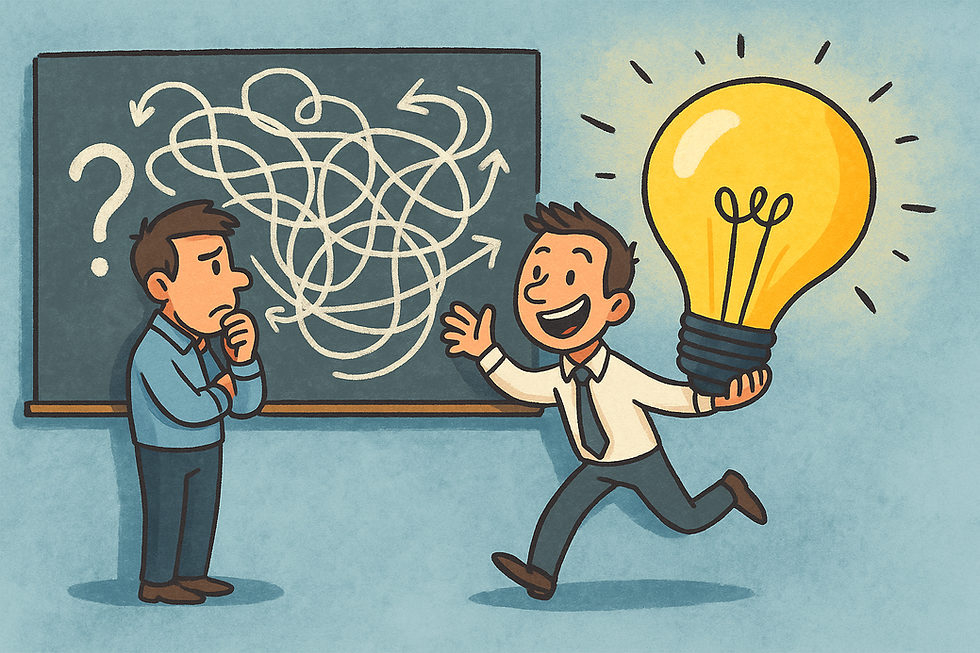Project Management: Why Jumping to Solutions Too Quickly is not Problem Solving
- Anne Werkmeister
- May 27, 2025
- 2 min read
(And Why We Start Every Project by Studying the Problem)

There’s a quote I love from Einstein:"If I had an hour to solve a problem, I’d spend 55 minutes thinking about the problem and five minutes thinking about solutions."
It sticks with me because it reflects one of the hardest parts of my job. At Romulus Technology, I help teams solve operational challenges, digitise workflows, and unlock performance.
But before any of that can happen, we need to agree on one thing:
What exactly is the problem?
And believe me, that's harder than it sounds.
Why Clients Want to Skip Ahead
I understand the pressure. When something is going wrong, especially if it's costing money, the instinct is: fix it. Now.
“Our workforce is lazy.”
“Our site is behind.”
“Our process is too slow.”
So the thinking becomes: let’s act fast.
Bring in a dashboard. Fire someone. Launch a tool.
Do something.
But when you rush to fix the symptom without understanding the root cause, you're not solving the problem, you're just shifting it.
What Looks Like the Problem Usually Isn't
Take the classic line: "Our workforce is lazy."
Sounds like a people problem. But is it?
If we stop and explore:
Are workflows clear and consistent?
Do workers have the tools and information they need?
Are there constant stop-and-go disruptions?
Is leadership aligned on priorities?
Often, what looks like underperformance is actually the result of confusion, friction, or breakdowns in communication.
And if we had jumped straight to the easy solution, like firing someone or tracking their every move, we would have solved the wrong thing.
Problem Framing Feels Slow, But Saves Time
Clients sometimes hesitate:"Why spend more time (and money) defining the problem when we already know it’s costing us?"
Because taking time to study the problem with all stakeholders:
Builds alignment
Reveals hidden blockers
Prevents mismatched expectations
Reduces resistance to change
It also avoids what I call “solution theatre”, when you deploy something shiny that doesn’t actually address the real issue.
The Real Work Happens in the Why (The 5 Why's)
When someone says,“We need a dashboard,”
Why?
“To track productivity.”
Why?
“Because people are waiting around.”
Why?
“Because materials arrive late and instructions aren’t clear.”
Now we’re getting somewhere.
That’s not a dashboard problem. That’s a workflow design problem. And that’s exactly the kind of thing we’re here to solve.
Slowing Down Is Not Wasting Time. It's Buying Clarity.
I’ve worked with enough teams to know this: Jumping straight to solutions feels productive, but slowing down to frame the problem is what actually drives results.
So yes, we’ll keep quoting Einstein. And yes, we’ll keep asking "why" even when it feels uncomfortable.
Because that’s how we turn good ideas into solutions that actually work.
If you’re stuck in a loop of fixes that don’t fix anything, maybe it’s time to stop solving, and start diagnosing.
Let’s figure it out together.



Comments